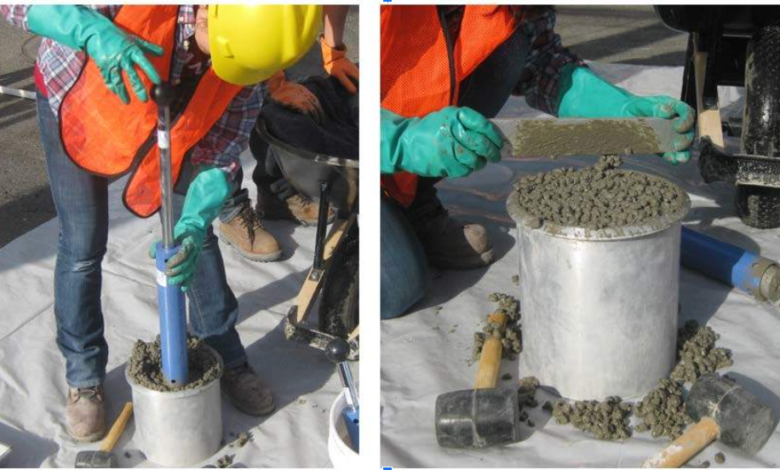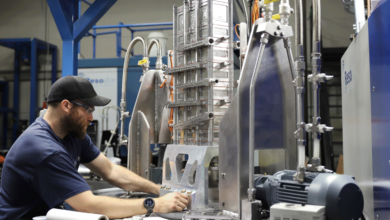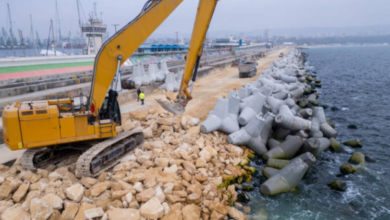How Does the Density of Concrete Affect Its Strength?

Introduction
The relationship between concrete density and strength represents one of the most fundamental principles in construction engineering and materials science. This intricate connection has been studied extensively by researchers and practitioners worldwide, leading to significant advancements in concrete technology and construction methodologies. Understanding how density affects strength is crucial for engineers, architects, and construction professionals who aim to create durable, safe, and cost-effective structures.
Concrete, as a composite material, derives its properties from the complex interaction between its constituent materials: cement, water, aggregates, and various additives. The density of concrete, which refers to its mass per unit volume, serves as a critical indicator of the material’s internal structure and, consequently, its mechanical properties. Higher density typically correlates with increased strength, but this relationship is influenced by numerous factors that must be carefully considered during design and construction phases.
The significance of this relationship extends beyond theoretical understanding. In practical applications, the density-strength correlation guides material selection, mix design optimization, quality control procedures, and structural design decisions. Engineers rely on this knowledge to predict concrete performance, ensure structural safety, and optimize material usage for economic and environmental benefits.
Understanding Concrete Density
Concrete density test is fundamentally determined by the density of its individual components and their proportional representation in the mix. The typical density of normal-weight concrete ranges from 2200 to 2400 kilograms per cubic meter, though this can vary significantly based on the specific materials and mix proportions used. The density value encompasses both the solid materials and any voids or air pockets present within the concrete matrix.
The measurement of concrete density involves determining the mass of a known volume of concrete, typically expressed in kilograms per cubic meter or pounds per cubic foot. This seemingly simple measurement actually reflects the complex internal structure of the material, including the packing efficiency of aggregates, the extent of cement hydration, and the presence of air voids or other discontinuities.
Fresh concrete density differs from hardened concrete density due to ongoing chemical reactions, moisture loss, and structural changes that occur during the curing process. The transition from fresh to hardened state involves complex physical and chemical transformations that affect both density and strength development. Understanding these changes is essential for proper quality control and performance prediction.
The distribution of density within a concrete element is rarely uniform. Factors such as segregation during placement, bleeding, settlement, and consolidation practices can create density variations that significantly impact local strength characteristics. These variations become particularly important in large concrete pours or complex structural elements where uniform properties are critical for performance.
The Fundamental Relationship Between Density and Strength
The correlation between concrete density and strength stems from basic materials science principles related to porosity, particle packing, and load transfer mechanisms. Higher density generally indicates better particle packing, reduced porosity, and more efficient load transfer pathways through the concrete matrix. These factors collectively contribute to enhanced mechanical properties, including compressive strength, tensile strength, and durability characteristics.
Research has consistently demonstrated that concrete strength increases with density, though the relationship is not strictly linear. The correlation coefficient between density and compressive strength typically ranges from 0.7 to 0.9, indicating a strong positive relationship while acknowledging the influence of other variables. This relationship holds true across different concrete types, aggregate sources, and mix designs, making it a reliable indicator for quality assessment and performance prediction.
The physical basis for this relationship lies in the reduced porosity and improved particle packing that accompany higher density. Dense concrete contains fewer voids and discontinuities that could serve as stress concentration points or failure initiation sites. The continuous matrix provides more effective load transfer pathways, allowing the material to resist higher stresses before failure occurs.
However, the density-strength relationship is influenced by the quality and characteristics of the constituent materials. High-density concrete made with poor-quality aggregates or inadequate cement content may not achieve the strength levels expected based on density alone. Conversely, well-designed concrete with optimized mix proportions can achieve exceptional strength even at moderate density levels.
Factors Influencing Concrete Density
The density of concrete is influenced by numerous factors, each contributing to the final material properties in different ways. Aggregate characteristics represent the most significant influence on concrete density, as aggregates typically constitute 70-80% of the concrete volume. The specific gravity, gradation, shape, and surface texture of both coarse and fine aggregates directly impact the overall density of the concrete mix.
Cement content and type also play crucial roles in determining concrete density. Higher cement content generally increases density, but the relationship is complex due to the varying specific gravity of different cement types and the impact of cement fineness on packing efficiency. The hydration products formed during cement curing have different densities than the original cement, further complicating the relationship.
Water-cement ratio significantly affects both fresh and hardened concrete density. While water has a lower specific gravity than other concrete constituents, the water-cement ratio influences the porosity of the hardened concrete matrix. Lower water-cement ratios typically result in denser, stronger concrete due to reduced porosity and improved cement hydration efficiency.
Admixtures and supplementary cementitious materials can substantially modify concrete density. Air-entraining admixtures intentionally introduce controlled air voids, reducing density but improving freeze-thaw resistance. Conversely, mineral admixtures like silica fume or fly ash can increase density while enhancing strength and durability through improved particle packing and pozzolanic reactions.
Mixing procedures, placement techniques, and consolidation methods significantly impact the final density of hardened concrete. Proper mixing ensures uniform distribution of materials and optimal particle packing. Adequate consolidation removes trapped air and ensures proper aggregate settlement, while poor consolidation practices can result in reduced density and compromised strength.
Types of Concrete Based on Density
Concrete is commonly classified into categories based on its density, with each category offering distinct advantages and applications. Normal-weight concrete, with densities ranging from 2200 to 2400 kg/m³, represents the most commonly used type in general construction applications. This concrete provides an optimal balance between strength, workability, and cost-effectiveness for most structural applications.
Lightweight concrete, with densities typically below 1850 kg/m³, achieves reduced weight through the use of lightweight aggregates or the introduction of air voids. Despite lower density, modern lightweight concrete can achieve substantial strength levels through careful mix design and material selection. The reduced dead load offered by lightweight concrete enables longer spans, reduced foundation requirements, and improved seismic performance in many applications.
Heavyweight concrete, exceeding 2400 kg/m³ in density, utilizes high-density aggregates such as magnetite, hematite, or steel shot to achieve maximum density and strength. This concrete type finds specialized applications in radiation shielding, counterweights, and situations requiring maximum mass or strength per unit volume.
Ultra-high-performance concrete represents an advanced category that achieves exceptional strength levels through optimized particle packing, reduced porosity, and specialized materials. While not necessarily the highest in density, these concrete types demonstrate that sophisticated mix design can achieve remarkable strength improvements through microstructural optimization.
Mechanisms Behind Density-Strength Correlation
The fundamental mechanisms linking concrete density to strength operate at multiple scales, from the molecular level of cement hydration to the macroscopic behavior of the composite material. At the microscopic level, higher density typically indicates more complete cement hydration and better formation of calcium silicate hydrate gel, the primary binding agent in concrete. This improved hydration creates stronger bonds between aggregate particles and reduces the number of weak interfaces within the material.
Porosity represents the most direct link between density and strength. Higher density concrete generally contains fewer and smaller pores, which serve as stress concentrators and failure initiation points. The relationship between porosity and strength follows well-established power law relationships, with strength decreasing exponentially as porosity increases. This relationship explains why even small improvements in density can yield significant strength gains.
The continuity of the load-bearing matrix improves with increased density. Dense concrete provides more continuous pathways for stress transfer, allowing loads to be distributed more effectively throughout the material. This improved load distribution reduces local stress concentrations and delays the onset of microcracking that precedes ultimate failure.
Interfacial bond strength between cement paste and aggregates also improves with increased density. Better particle packing and reduced bleeding create stronger, more durable bonds at aggregate-paste interfaces. These interfaces often represent the weakest links in concrete, so improvements in bond strength directly translate to enhanced overall material strength.
See also: Blum Price Prediction: Decoding Market Trends and Forecasting Techniques
Testing and Measurement Methods
Accurate measurement of concrete density requires standardized procedures and careful attention to sampling and testing techniques. The unit weight test, performed according to ASTM C138 or similar standards, provides the most common method for determining fresh concrete density. This test involves filling a calibrated container with fresh concrete, consolidating according to specified procedures, and measuring the mass of the known volume.
Hardened concrete density measurement typically involves core sampling and laboratory testing. Cores must be representative of the in-place concrete and properly prepared to ensure accurate results. The test involves measuring the mass and volume of the core specimen, with volume determination accomplished through direct measurement or displacement methods.
Non-destructive testing methods for density assessment include nuclear density gauges and ultrasonic testing. These methods allow density evaluation without core extraction but require calibration for specific concrete types and conditions. Nuclear gauges measure the interaction of gamma radiation with concrete, while ultrasonic methods correlate wave propagation characteristics with density and strength properties.
Quality control procedures must account for the natural variability in concrete density and its impact on strength assessment. Statistical analysis of density-strength relationships for specific concrete types and conditions enables more accurate strength prediction and quality acceptance criteria. These relationships must be regularly updated and validated through ongoing testing programs.
Practical Applications in Construction
The density-strength relationship finds numerous practical applications in construction quality control and material optimization. Field density measurements provide rapid assessment of concrete quality and can identify potential problems before they affect final strength. This capability enables corrective actions during construction rather than costly remediation after project completion.
Mix design optimization utilizes density-strength relationships to balance material costs, performance requirements, and construction constraints. Engineers can predict strength development based on target density values and adjust mix proportions to achieve optimal performance. This approach enables more efficient use of materials and reduced construction costs while maintaining required performance levels.
Structural design considerations increasingly incorporate density-strength relationships for more accurate performance prediction. Variable density within structural elements can be accounted for in analysis, leading to more refined and economical designs. This approach is particularly valuable for large or complex structures where material property variations significantly impact behavior.
Quality assurance programs rely heavily on density measurements as indicators of concrete quality and uniformity. Density variations can signal problems with mixing, placement, or consolidation that might not be apparent through visual inspection. Early identification of these issues enables corrective action before they compromise structural performance.
Optimization Strategies for Enhanced Performance
Achieving optimal density-strength relationships requires comprehensive understanding of material interactions and construction processes. Aggregate gradation optimization represents one of the most effective strategies for improving concrete density and strength. Well-graded aggregate combinations minimize voids and maximize packing efficiency, resulting in denser, stronger concrete with reduced cement requirements.
Supplementary cementitious materials offer opportunities for both density and strength enhancement. Materials like silica fume provide particle packing improvements while contributing to strength through pozzolanic reactions. Proper selection and proportioning of these materials can achieve significant performance improvements while maintaining economic viability.
Advanced mixing techniques can substantially improve concrete density and uniformity. High-energy mixing systems, extended mixing times, and optimized mixing sequences can enhance particle distribution and packing efficiency. These improvements translate directly to increased density and strength while potentially reducing material requirements.
Placement and consolidation optimization ensures that designed density levels are achieved in the field. Advanced consolidation techniques, including high-frequency vibration and self-consolidating concrete technology, can achieve superior density and uniformity compared to conventional methods. These techniques are particularly valuable for complex geometries or heavily reinforced sections where conventional consolidation is challenging.
Case Studies and Real-World Examples
Several notable construction projects demonstrate the practical importance of density-strength relationships in achieving exceptional performance. The construction of high-rise buildings increasingly relies on high-strength concrete with optimized density characteristics to achieve required strength levels while maintaining workability and pumpability. These projects often involve extensive testing programs to establish project-specific density-strength relationships for quality control purposes.
Infrastructure projects such as bridges and dams require concrete with consistent density and strength characteristics to ensure long-term performance and safety. The Hoover Dam, constructed in the 1930s, represents an early example of systematic attention to concrete density and strength relationships. Modern dam construction projects utilize sophisticated mix designs and quality control procedures based on density-strength correlations to ensure performance and durability.
Precast concrete manufacturing relies heavily on density-strength relationships for quality control and performance optimization. Consistent density achievement enables reliable strength prediction and reduces testing requirements while maintaining quality standards. Many precast plants have developed proprietary density-strength relationships for their specific materials and processes.
Marine construction projects face unique challenges related to density and strength requirements. Underwater concrete placement requires specialized techniques to achieve adequate density and strength despite challenging placement conditions. These projects often utilize modified mix designs and placement procedures specifically developed to maintain density-strength relationships under adverse conditions.
Certified Material Testing Products (Certified MTP) is a leading supplier of construction materials testing equipment and laboratory supplies in the United States. They offer a comprehensive range of products for testing concrete, asphalt, aggregate, soil, and cement, catering to both field and laboratory applications But no matter whether they are prefered or not, the whole idea behind these tools is similar: getting a polished, shiny, and permanent effect. New to stucco or a seasoned pro, investing in good tools and learning the nuances of their use is what will get you started perfecting your craft.
Future Developments and Innovations
Emerging technologies promise to enhance our understanding and application of density-strength relationships in concrete. Advanced imaging techniques, including X-ray computed tomography and magnetic resonance imaging, enable detailed characterization of concrete microstructure and its relationship to density and strength. These tools provide unprecedented insight into the mechanisms governing concrete performance.
Artificial intelligence and machine learning applications are being developed to predict concrete strength based on density measurements and other material characteristics. These systems can process vast amounts of data to identify complex relationships and optimize mix designs for specific performance requirements. Such tools promise to revolutionize concrete technology and quality control practices.
Nanotechnology applications in concrete are exploring new approaches to density and strength enhancement. Nanoparticles can improve particle packing efficiency and modify cement hydration processes, potentially achieving exceptional strength levels at moderate densities. These developments may fundamentally change our understanding of density-strength relationships.
Sustainable concrete technologies are investigating how recycled materials and alternative binders affect density-strength relationships. As environmental concerns drive the adoption of sustainable construction practices, understanding how these materials impact fundamental concrete properties becomes increasingly important for maintaining performance standards.
Conclusion
The relationship between concrete density and strength represents a fundamental principle that underlies much of modern concrete technology and construction practice. This relationship, while not perfectly linear, provides a reliable basis for material selection, mix design optimization, quality control, and performance prediction. Understanding the mechanisms behind this correlation enables engineers and construction professionals to make informed decisions that optimize both performance and cost-effectiveness.
The practical applications of density-strength relationships extend across all aspects of concrete construction, from initial mix design through final quality acceptance. As construction projects become more complex and performance requirements more demanding, the ability to predict and control concrete strength through density management becomes increasingly valuable. This capability enables more efficient material usage, reduced construction costs, and improved structural performance.
Future developments in concrete technology will undoubtedly build upon our current understanding of density-strength relationships while potentially revealing new mechanisms and applications. Advanced characterization techniques, computational modeling, and innovative materials will expand our ability to optimize concrete performance through density control. These developments promise to maintain the relevance and importance of density-strength relationships in advancing concrete technology.
The continued study and application of density-strength relationships in concrete will remain essential for addressing future construction challenges. As sustainability concerns drive the adoption of alternative materials and construction methods, understanding how these changes affect fundamental concrete properties will be crucial for maintaining safety and performance standards while achieving environmental objectives.
Frequently Asked Questions
What is the typical relationship between concrete density and compressive strength?
The relationship between concrete density and compressive strength is generally positive and strong, with correlation coefficients typically ranging from 0.7 to 0.9. As concrete density increases, compressive strength generally increases as well. However, this relationship is not perfectly linear and can be influenced by factors such as aggregate quality, cement type, water-cement ratio, and curing conditions. For normal-weight concrete, an increase in density of 100 kg/m³ often corresponds to an increase in compressive strength of 3-7 MPa, though this can vary significantly based on the specific mix design and materials used.
How does aggregate type affect the density-strength relationship in concrete?
Aggregate type has a profound impact on both concrete density and the density-strength relationship. Dense aggregates like granite or basalt contribute to higher concrete density and typically support higher strength levels. Lightweight aggregates such as expanded clay or pumice reduce concrete density but may limit maximum achievable strength. The key factor is not just aggregate density but also aggregate quality, including strength, surface texture, and bond characteristics with cement paste. High-quality lightweight aggregates can still produce strong concrete despite lower density, while poor-quality dense aggregates may not achieve expected strength levels despite high density.
Can concrete achieve high strength with relatively low density?
Yes, concrete can achieve high strength with relatively low density through careful mix design and advanced materials. Ultra-high-performance concrete (UHPC) often achieves compressive strengths exceeding 150 MPa while maintaining moderate densities through optimized particle packing, very low water-cement ratios, and high-quality materials. Additionally, modern lightweight concrete using high-strength lightweight aggregates can achieve strengths comparable to normal-weight concrete while reducing density by 20-25%. The key is optimizing the concrete microstructure rather than simply maximizing density.
How accurate is density as a predictor of concrete strength?
Density is a reasonably accurate predictor of concrete strength, particularly when used in conjunction with other factors. For a given concrete type and mix design, density measurements can predict strength within acceptable tolerances for most quality control purposes. However, density alone cannot account for all variables affecting strength, such as aggregate quality, cement characteristics, curing conditions, and age. The accuracy of density-based strength prediction improves when project-specific calibration relationships are established through testing. Typical prediction accuracy ranges from ±10-20% for well-characterized concrete types.
What factors can cause deviations from expected density-strength relationships?
Several factors can cause deviations from expected density-strength relationships in concrete. Poor aggregate quality can result in high density but low strength if the aggregates themselves are weak or poorly bonded to cement paste. Inadequate curing can prevent proper strength development despite achieving target density. Segregation during placement can create density variations that don’t reflect uniform strength distribution. Chemical admixtures may affect the relationship by altering cement hydration or introducing air voids. Additionally, test specimen preparation and testing procedures can influence results if not properly standardized.
How does concrete age affect the density-strength relationship?
The density-strength relationship in concrete evolves with age due to ongoing cement hydration and microstructural changes. Early-age concrete shows rapid strength gain with relatively stable density, improving the correlation over time. However, long-term changes such as continued hydration, carbonation, or moisture loss can gradually alter both density and strength. The relationship typically stabilizes after several months but may continue to evolve slowly over years. For mature concrete, the density-strength relationship becomes more stable and predictable, making it particularly useful for assessing older structures or long-term performance evaluation.
What role does air content play in concrete density and strength?
Air content significantly affects both concrete density and strength, typically reducing both properties. Each 1% increase in air content typically reduces concrete density by 20-30 kg/m³ and compressive strength by 3-7%. However, controlled air entrainment for freeze-thaw resistance represents an acceptable trade-off between strength and durability. The key is distinguishing between beneficial entrained air (small, evenly distributed bubbles) and harmful entrapped air (large, irregular voids). Modern air-entraining admixtures can minimize strength loss while providing necessary durability benefits, though the density-strength relationship must account for the intentional air content.
How do supplementary cementitious materials affect density-strength relationships?
Supplementary cementitious materials (SCMs) like fly ash, slag, and silica fume can significantly modify density-strength relationships in concrete. Fine SCMs like silica fume can increase density through improved particle packing while contributing to strength through pozzolanic reactions. Fly ash may slightly reduce concrete density but can enhance long-term strength development. The effects depend on the specific SCM type, replacement level, and concrete age. These materials often improve the density-strength relationship by creating denser, more homogeneous concrete microstructures, though the benefits may develop more slowly than with plain portland cement concrete. For more Any Business Card, check out this guide from NFC Business Card Temperature corrections for measuring equipment become particularly important during extreme weather conditions.




